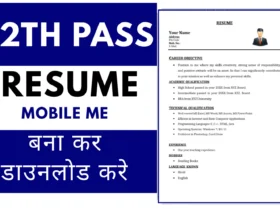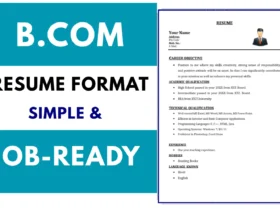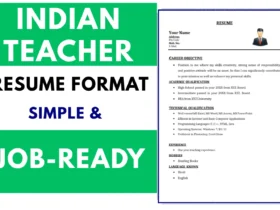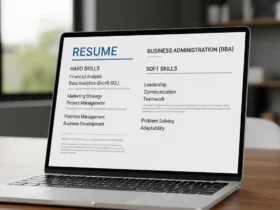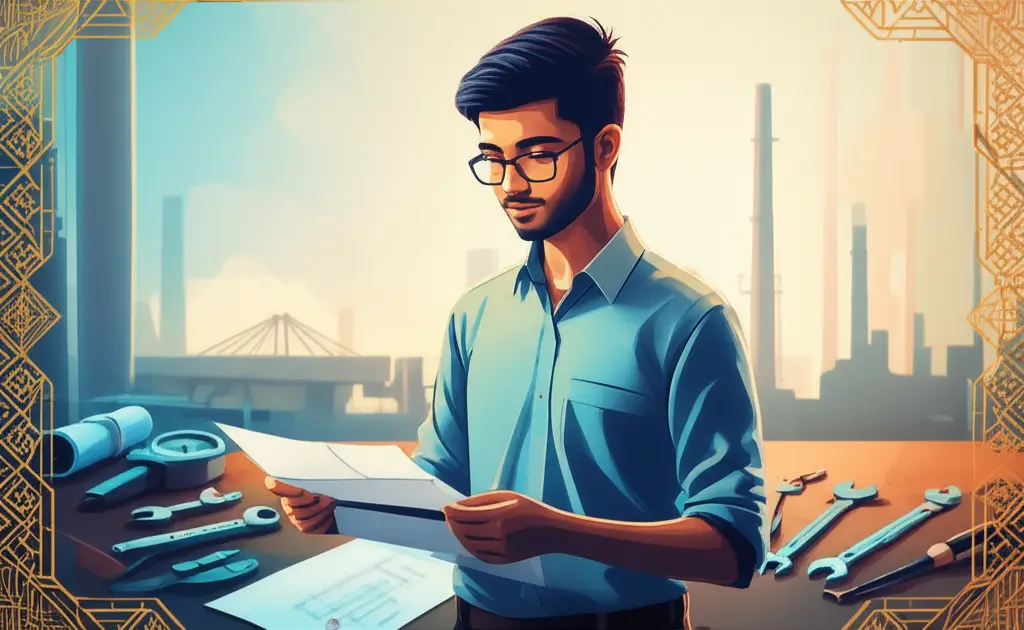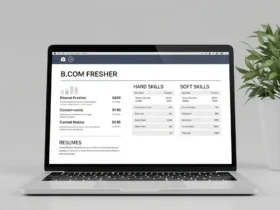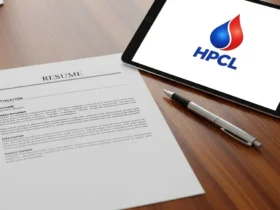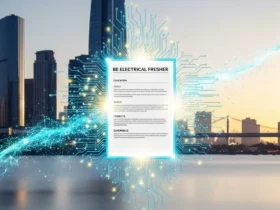Hey there, young friends! Thinking about your next steps after school? Many of you might be looking at what comes after 10th or 12th. If you are someone who likes working with your hands, building things, and fixing machines, then becoming an ITI Fitter could be a good path. This job is about making sure machines and parts fit together right, and keeping factories running. It is a big job in our country.
This post will give you a simple map to making a strong resume for an ITI Fitter role. We will also talk about the job itself, where it came from in India, what is happening now, and what you can expect in the coming years. For many Indian families, learning a practical skill like this means getting a steady job and a good life. So, let us get started and learn how to make your job search easier. You will find help for your ITI Fitter resume, especially if you are a fresher in India, and learn how to make a strong application.
Overview
So, what exactly is an ITI Fitter? Imagine someone who puts together big machines, fixes them when they break, and makes sure all the parts fit just right. That is a Fitter. They use various tools and read drawings to do their work. A Fitter’s work involves tasks like cutting, welding, drilling, and grinding metal parts. They need to understand how different machine components connect and operate.
When you make a resume for this kind of work, it is like telling your story to a future employer. You will want to cover a few main parts: your contact details, your school background (especially your ITI training), your hands-on skills, any projects you worked on, and a bit about you as a person. Think of it as your chance to make a good first impression, like when you meet someone new for the first time at a community event or family gathering. You want to present yourself well, showing a clear, good resume layout for ITI Fitter jobs. Knowing what to put on an ITI Fitter Resume can truly make a difference.
Sample ITI Fitter Resume Format (Easy to Copy)
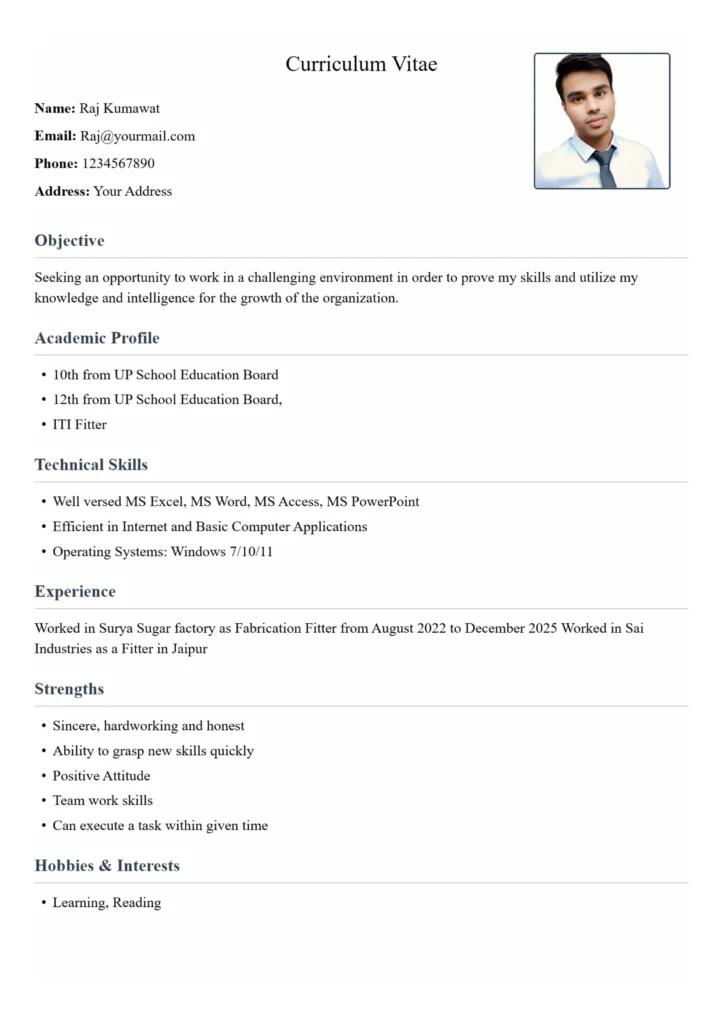
👉 Download Link: [Get Here]
You can:
- Fill it in Adobe or any PDF app
- Print it on clean A4 paper
Historical Perspective
Have you ever wondered why we have ITIs? Back in the 1950s, when India was just starting to build many factories and industries, we needed a lot of skilled workers. The government then started Industrial Training Institutes (ITIs) to teach young people skills like fitting, welding, and more. The Fitter trade was one of the first ones taught, way back in 1960 in places like ITI Nagaon.
These schools gave many young Indians a chance to get a good trade. They offered a way to earn a living and build a career, even if going to a big college was not possible. Think of how our grandparents or older relatives learned a craft or trade to support their families; ITIs offered a modern version of that. They helped build the cars, trains, and machines that shaped modern India. This rich history shows why the Fitter trade job future in India looks bright, as it has always been a key part of our nation’s growth.
Current Opinions
Today, the demand for trained Fitters in India is still very high. Our country is making more goods, aiming for a big goal of a $1 trillion manufacturing sector by 2030. This means many job openings for people with your skills! You could work in places that make cars, in train yards, at building sites, or even in oil and gas companies. Big names like Tata Steel and Indian Railways are often looking for Fitters. The skills for ITI Fitter work in India are quite diverse, including mechanical assembly, reading blueprints, and machine upkeep. Industrial training for Fitter roles often covers these many areas.
Beyond India, skilled Fitters are wanted in countries like those in the Gulf region and Europe, offering chances for higher pay. Also, with new tech coming up, ITI training now includes things like learning how machines work with computers. This prepares you for a future where factories use more automation. This field is growing, just like our nation is growing, offering many pathways.
Challenges
Even with good chances, being an ITI Fitter can have some bumps along the road. Sometimes, the skills taught at institutes do not quite match what newer factories are looking for. Also, some ITI courses do not have enough students, meaning many seats stay empty. This can happen if students do not know much about the value of ITI jobs or if some schools do not have the newest tools or enough teachers.
Another thing is that starting pay might be lower for some positions, or people might feel that trade jobs get less respect than university degrees. It is like how sometimes a cousin who gets a “degree job” gets more attention, even if a skilled Fitter can earn well and has very stable work. It is about changing how people view these honest, hardworking jobs. This viewpoint can be a challenge for those taking up trade courses, even though the long-term career path can be very rewarding.
Future Outlook
The future looks bright for ITI Fitters in India. As our country keeps growing its manufacturing and factory sectors, the need for skilled hands like yours will stay strong. Imagine more cars being made, more buildings going up, and more infrastructure projects. All these need Fitters. The ITI Fitter course next steps in India offer many paths for growth.
After your ITI, you have paths to grow. You can learn more skills, like computer-controlled machine work. You can also get a diploma in Mechanical Engineering, which means more study and potentially higher roles. Many Fitters go on to become supervisors or even start their own small businesses, fixing things or making metal parts for others, becoming their own boss.
Learning on the job through an apprenticeship after your course is also a very smart step to get real-world ability. This is how you can climb the ladder and do well in your work. There are also government jobs for ITI Fitter graduates, particularly in sectors like the railways and public companies, providing stable career options.
Conclusion
So, there you have it. Creating a solid resume is your first big step to getting a good ITI Fitter job. It is about clearly showing your skills, what you have learned, and what you can bring to a workplace. Remember, the Fitter trade has a strong past in India, a good place now, and a future with many new possibilities. Making a good ITI Fitter Resume is key to opening these doors.
Do not let anyone tell you that a trade job is not a worthy path. It is a respected way to make a living, to build things, and to help our nation move forward. Go on, put your best foot forward, make that resume shine, and start building your future!
FAQ
What does an ITI Fitter usually do?
Fitters put together and fix machines. They work with metal, cutting, welding, and making sure all parts fit right for things like car parts, pipes, or factory tools. They also keep machines running smoothly.
What skills should I learn for this job?
You will want to know how to put mechanical parts together, use different fitting tools, read drawings (like blueprints), and fix problems with machines. Being good at communicating and working with others also helps a lot. These are key skills for ITI Fitter work in India.
How much can a fresh ITI Fitter earn in India?
When you first start, you might earn around ₹12,000 to ₹18,000 a month. With a few years of experience, this can go up to ₹20,000 to ₹35,000 or even more, especially in some specialized fields. This is part of what ITI Fitter resume help for freshers India aims to cover.
Are there jobs for ITI Fitters with the government?
Yes, many! The Indian Railways and different public sector companies often look for ITI Fitters. These are usually steady jobs. These government jobs for ITI Fitter graduates are a good option.
What do interviewers ask ITI Fitters?
They will ask about tools, machines, and how you fix things. For example, they might ask about a Vernier caliper, or how to control pressure in a hydraulic system. They also want to know if you can work with others and if you are careful about safety.
Can I study more after my ITI Fitter course?
Definitely! After ITI, you can join a Mechanical Engineering Diploma course. You can often enter directly into the second year. This lets you grow your knowledge and career. This forms part of the ITI Fitter course next steps in India.

